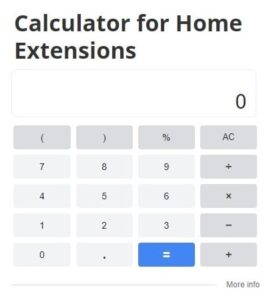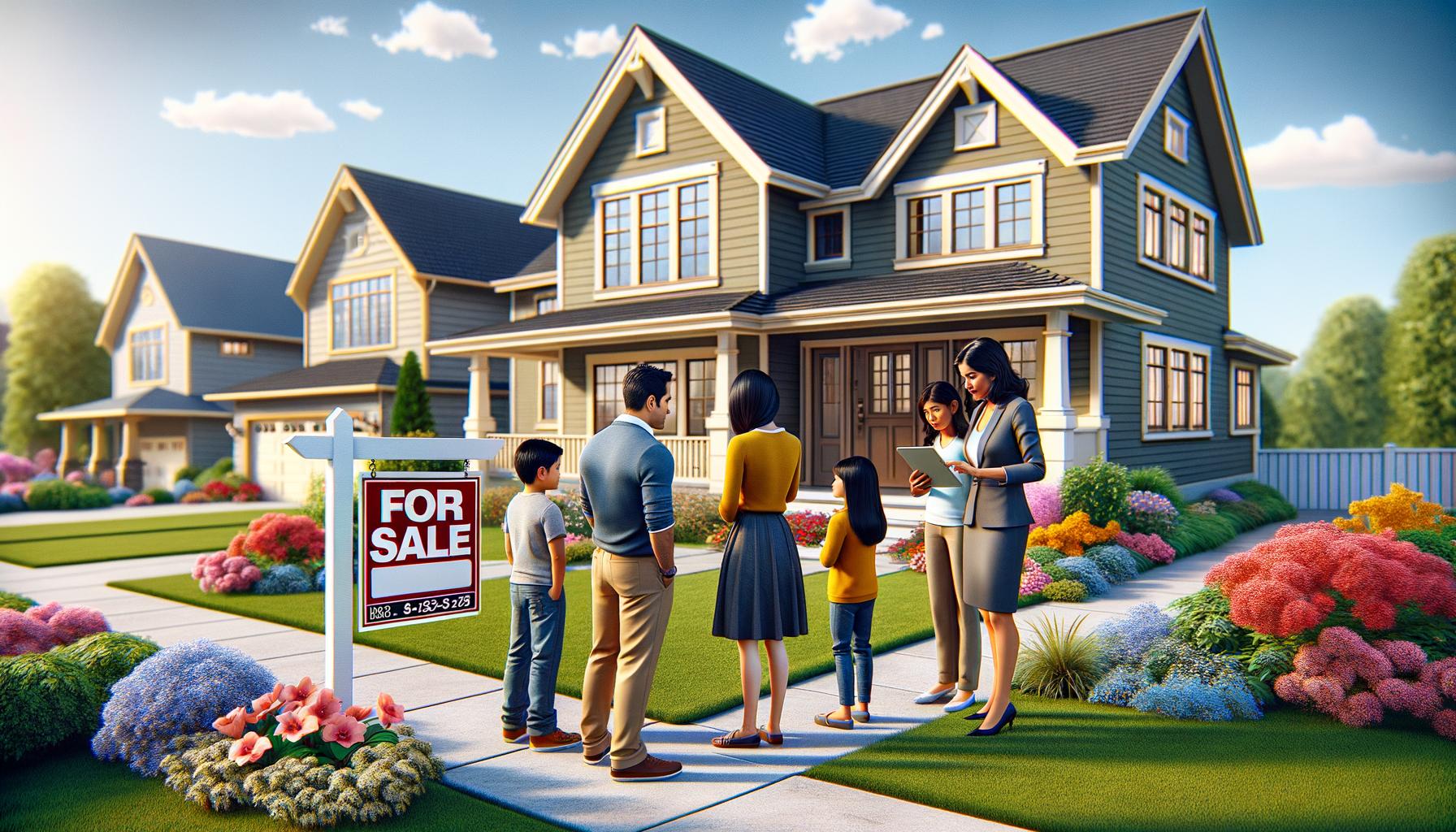
Selling your home can be a daunting task, but with the right approach, it can also be a rewarding experience. At Home Owners Association, we’ve compiled a list of top selling home tips to help you navigate this process successfully.
From preparing your property for sale to implementing effective marketing strategies, this guide covers all the essential steps. Get ready to maximize your home’s value and attract potential buyers with our expert advice.
How to Prepare Your Home for Sale
Declutter and Depersonalize
The first step in preparing your home for sale is to declutter and depersonalize. Remove personal items, family photos, and excessive decorations. This allows potential buyers to envision themselves living in the space. According to the National Association of Realtors (NAR) 2023 Report, 93% of agents recommend decluttering as the #1 staging step before listing.
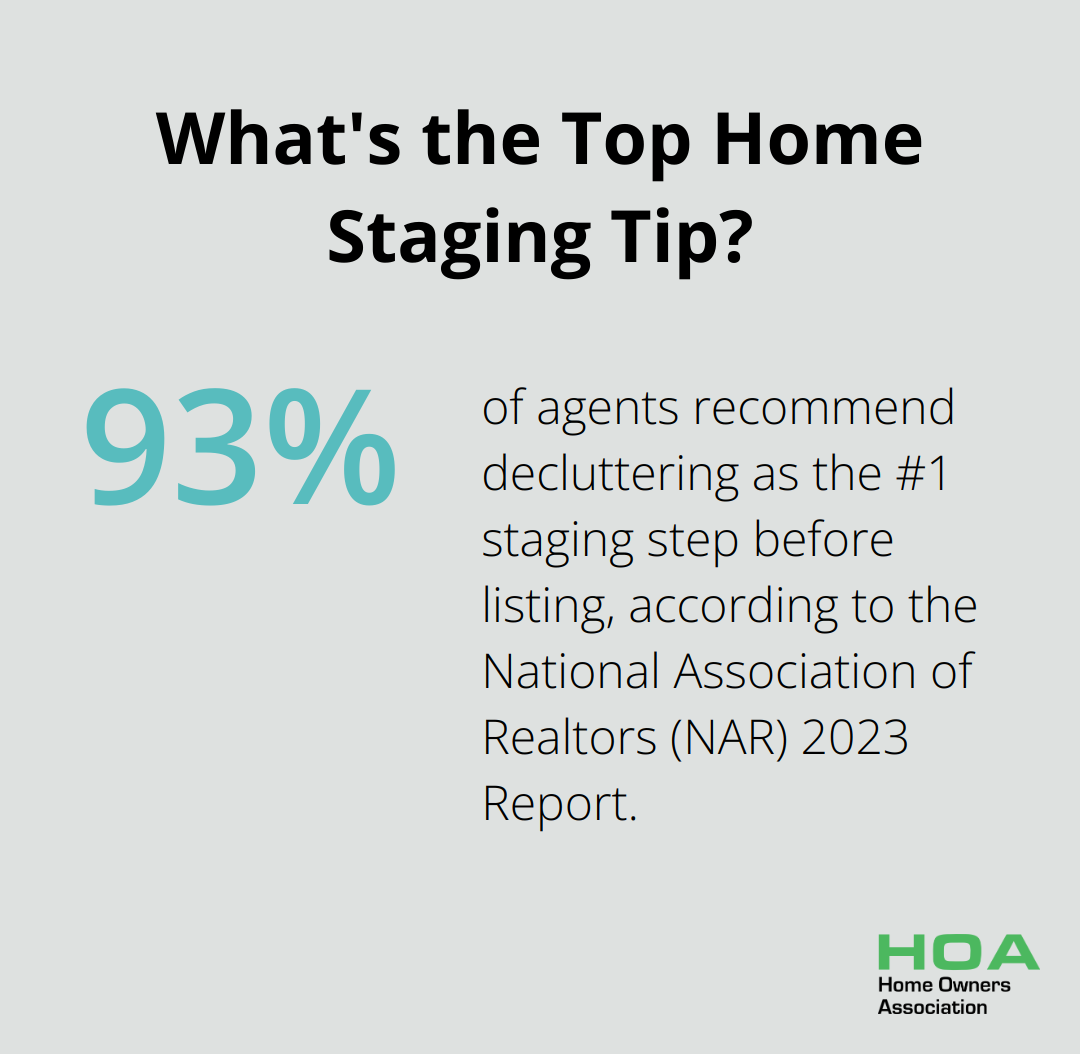
Pack away non-essential items and consider renting a storage unit for excess furniture. Try to remove about 30% of your belongings to create a spacious and inviting atmosphere. This process not only makes your home more appealing but also gives you a head start on packing for your move.
Make Necessary Repairs and Improvements
Address any obvious repairs or maintenance issues before listing your home. Fix leaky faucets, patch holes in walls, and replace burnt-out light bulbs. These small details can make a big difference in a buyer’s perception of your property.
Consider making strategic improvements that offer a high return on investment. Focus on updates that modernize your home without breaking the bank, such as fresh paint, new hardware on cabinets, or updated light fixtures.
Stage Your Home for Maximum Appeal
Professional home staging can significantly impact your sale. While hiring a professional stager is an option, you can also implement some DIY staging techniques.
Rearrange furniture to create open, inviting spaces. Use neutral colors and remove any bold or polarizing decor. Ensure each room has a clear purpose and highlight your home’s best features. For example, if you have a fireplace, make it a focal point by arranging seating around it.
Enhance Curb Appeal
First impressions matter, and the exterior of your home is the first thing potential buyers will see. Boost your curb appeal by maintaining your lawn, trimming bushes, and adding some colorful plants or flowers. A fresh coat of paint on the front door (a relatively inexpensive update) can make a significant impact on the overall appearance of your home.
Clean your windows, power wash the driveway, and ensure all exterior lights are functioning properly. These small touches can make a big difference in attracting potential buyers and setting your home apart from the competition.
Now that you’ve prepared your home for sale, the next step is to set the right price. Pricing your home correctly is a critical factor in attracting potential buyers and maximizing your return. Let’s explore how to determine the optimal price for your property in the current market.
How to Set the Right Price for Your Home
Setting the right price for your home is a key step in the selling process. Let’s explore effective strategies to determine the optimal asking price for your property.
Research Comparable Properties
Start by investigating recent sales of similar homes in your neighborhood. Look for properties with comparable square footage, number of bedrooms and bathrooms, and overall condition. Real estate websites and local property records provide valuable insights into these “comps.” Pay attention to how long these properties stayed on the market and if there were any price reductions.
Analyze Current Market Conditions
The real estate market changes constantly, and understanding its current state is important. Is it a buyer’s market or a seller’s market? This information helps you gauge where your property fits in the current market landscape.
Seek Professional Guidance
While online resources help, nothing beats the expertise of a local real estate professional. A skilled agent can provide a Comparative Market Analysis (CMA) that takes into account factors like your home’s unique features, location, and current market trends. They can also advise on potential improvements that could increase your home’s value.
Consider Your Home’s Unique Features
Every home has its own set of characteristics that can affect its value. These might include recent renovations, energy-efficient upgrades, or a prime location. Take stock of these features and factor them into your pricing strategy. A well-maintained garden or a newly renovated kitchen (which typically yields a high return on investment) can justify a higher asking price.
Be Flexible and Ready to Adjust
The market can shift quickly, so be prepared to adjust your price if necessary. If your home sits on the market for an extended period without much interest, it might be time to reconsider your asking price. On the other hand, if you receive multiple offers quickly, you might have priced your home too low.
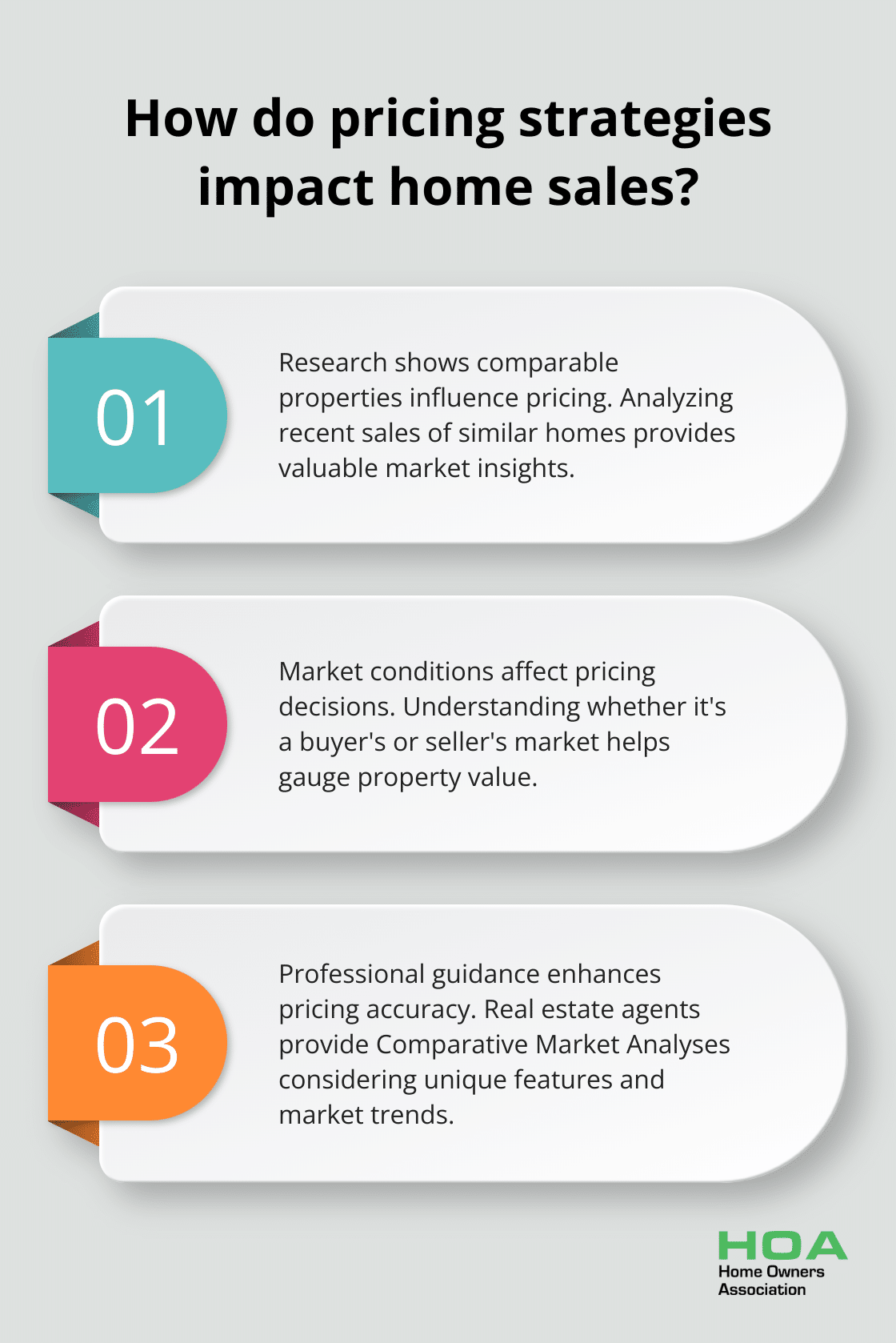
Pricing your home too high can lead to a longer time on the market, while pricing too low might leave money on the table. The goal is to find that sweet spot that attracts buyers while maximizing your return. With the right approach and expert guidance, you’ll position yourself to set a competitive and attractive price for your home. Now that you’ve set the right price, let’s move on to effective marketing strategies to showcase your property to potential buyers.
Effective Marketing Strategies for Your Home Sale
Showcase Your Home with Professional Photography
High-quality photos are essential in modern home selling. The National Association of Realtors reports that 87% of home buyers find photos very useful in their home search. Invest in a professional photographer who specializes in real estate. They will capture your home’s best angles and use lighting to make spaces appear larger and more inviting.
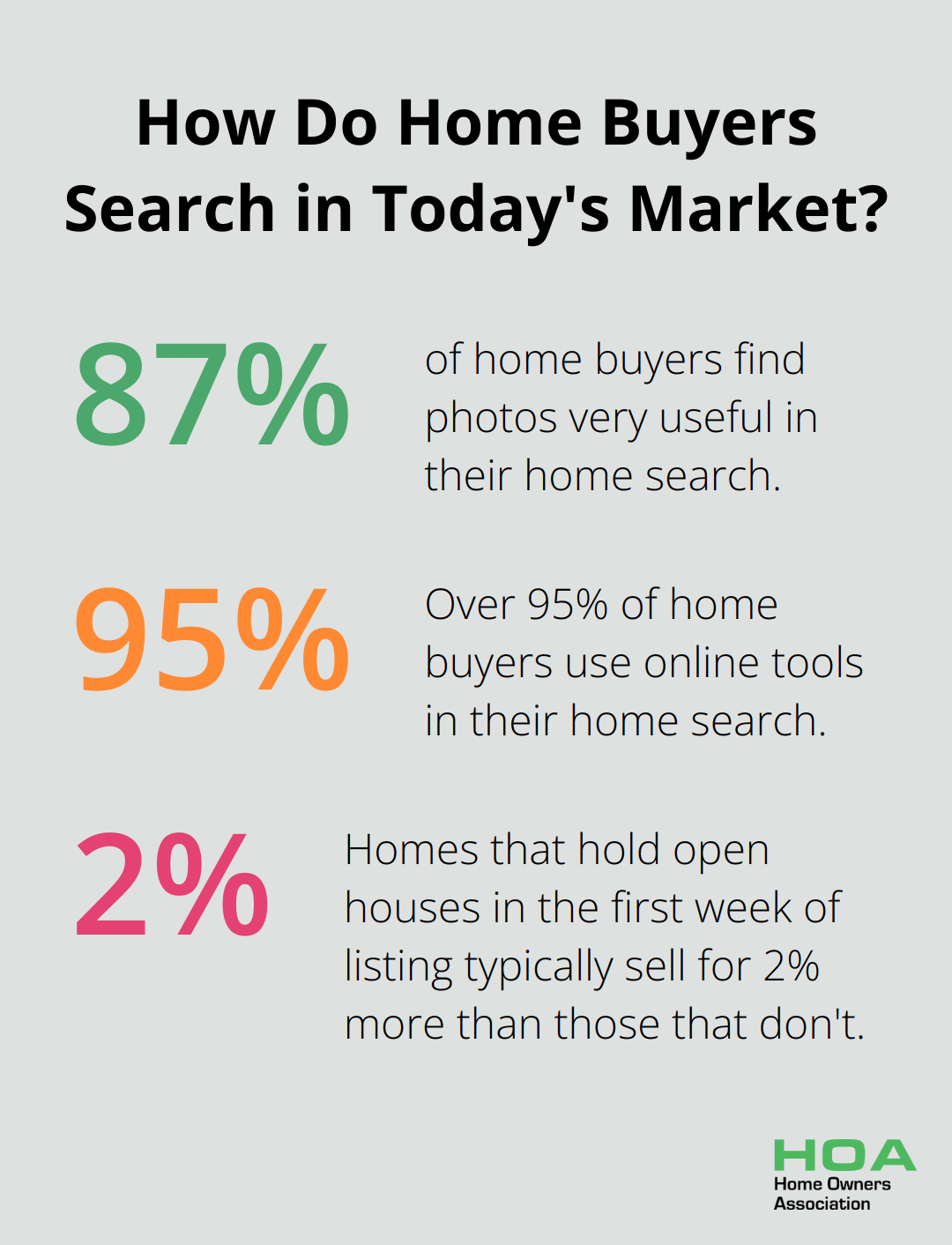
Add a virtual tour to your listing. This technology allows potential buyers to explore your home from anywhere, at any time. The Real Estate Staging Association reports that homes with virtual tours receive 87% more views than those without.
Leverage Online Listings and Social Media
In 2023, over 95% of home buyers use online tools in their home search (according to the National Association of Realtors). List your home on major real estate websites and apps. Write a compelling description that highlights your home’s unique features and recent upgrades.
Social media platforms offer additional exposure. Create a dedicated Facebook page for your property or use Instagram to showcase your home’s best features. Ask friends and family to share your listing within their networks.
Host Strategic Open Houses and Private Showings
While online marketing is important, in-person viewings remain powerful. Open houses allow multiple potential buyers to view your property at once, creating a sense of competition. Zillow reports that homes that hold open houses in the first week of listing typically sell for 2% more than those that don’t.
For serious buyers, offer private showings. These provide a more personalized experience and give potential buyers the opportunity to envision themselves living in the space without distractions.
When hosting viewings, focus on details. Clean your home thoroughly, ensure good lighting, and maintain a comfortable temperature. Try playing soft background music and using subtle, pleasant scents to create an inviting atmosphere.
Highlight Unique Features and Selling Points
Identify and emphasize your home’s standout features. This could include recent renovations, energy-efficient upgrades, or a prime location. Create a list of these selling points and ensure they’re prominently featured in your marketing materials.
For example, if you’ve recently installed solar panels, highlight the potential energy savings. If your home is in a sought-after school district, make sure potential buyers know this (as it’s often a key factor for families).
Utilize Professional Marketing Materials
In addition to online listings, consider creating professional marketing materials. This might include high-quality brochures, property information sheets, or even a dedicated website for your home.
These materials should include all relevant information about your property (square footage, number of bedrooms and bathrooms, recent upgrades, etc.) as well as high-quality images and any unique selling points. Professional marketing materials can leave a lasting impression on potential buyers and set your property apart from others on the market.
Final Thoughts
Selling your home requires careful preparation and strategic marketing. You must declutter, repair, and stage your property to create an inviting atmosphere that appeals to potential buyers. Setting the right price based on market research and professional guidance will attract serious offers. High-quality photography, virtual tours, and open houses will showcase your home’s best features effectively.
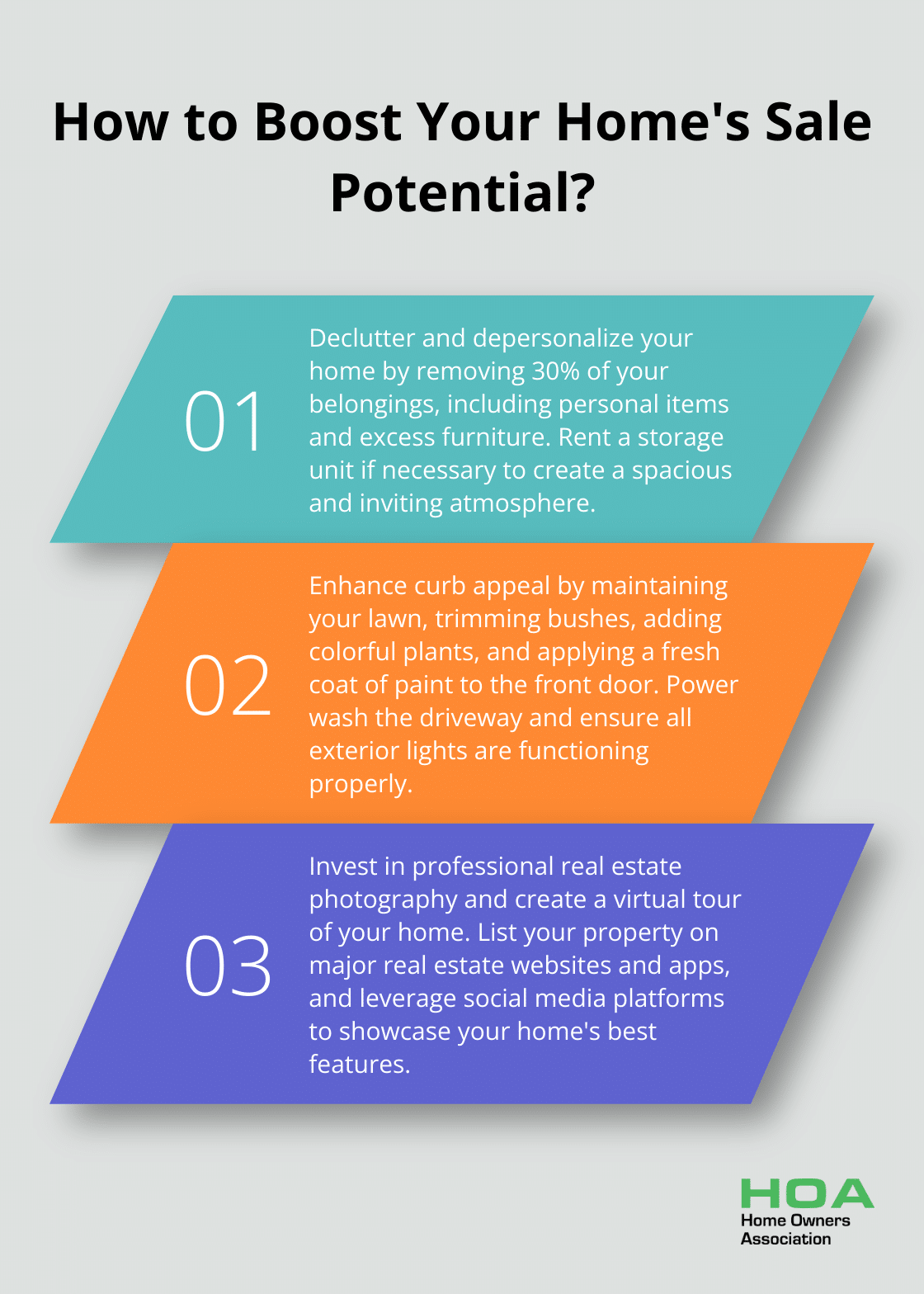
Professional support can provide invaluable expertise throughout the selling process. Real estate agents, photographers, and home stagers bring specialized knowledge to help you navigate challenges and maximize your home’s potential. Their insights into local market trends and buyer preferences can lead to a successful sale.
At Home Owners Association, we support homeowners in Melbourne, Australia, through every step of their property journey. Our benefits (including trade pricing and expert advice) can help you make informed decisions about home improvement projects. With the right resources and support, you can approach the selling process confidently and succeed in the Melbourne real estate market.





